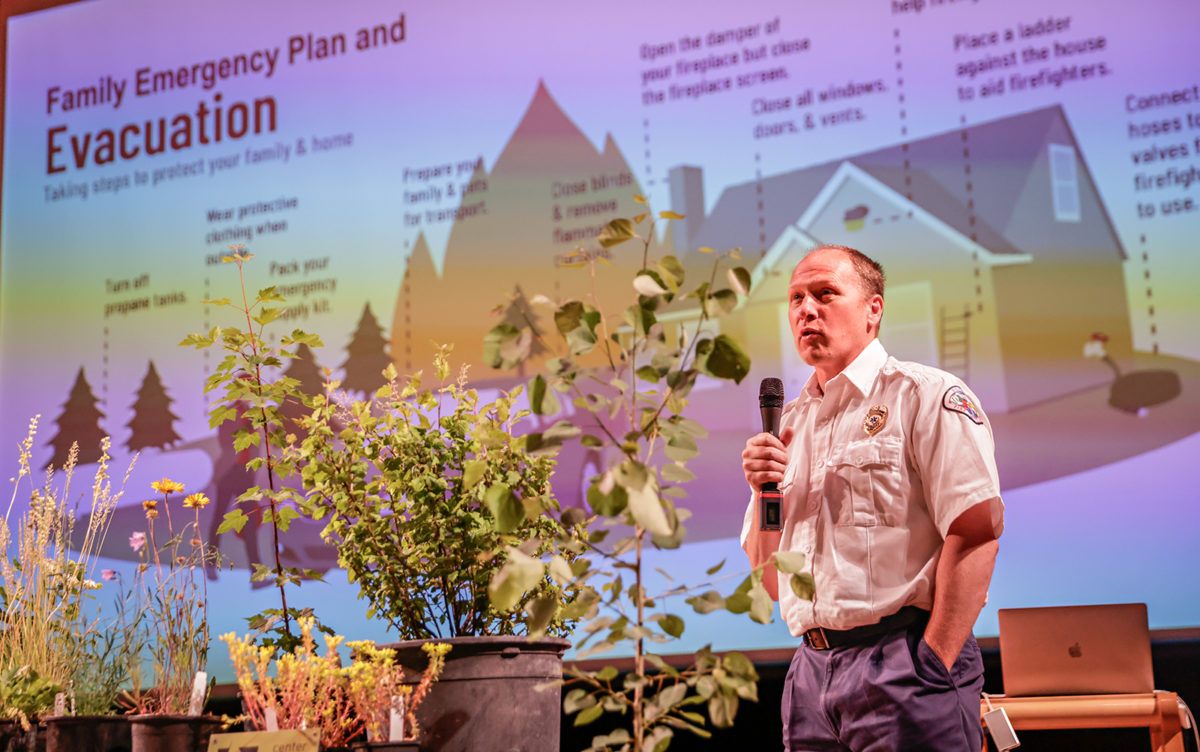The city of Whitefish is one of 18 communities in Montana designated as a resort area, allowing the local governments to leverage a tax of up to 3% on lodging, food and drink establishments, and luxury retail.
Voters in 2023 approved extending the Whitefish resort tax for another two decades, funneling the additional revenue into street improvement projects, tax relief, community housing and parks and recreation. The boundaries of the resort tax district are tied directly to the town’s city limits, however, and don’t include the region’s largest wintertime draw — its ski area.
Big Mountain, home to Whitefish Mountain Resort, is not included in the resort tax district and currently misses out on revenue for infrastructure needs and public services, including the Big Mountain Fire Department.
“Right now, the residents on the mountain are paying for a service that every visitor uses,” said Ben DeVall, the Big Mountain Fire Chief. “We’re struggling to retain staff, our firefighters work longer hours than any other fire department. If we have to stay at the status quo, we won’t be able to provide the services we need to.”

Ballots have already been sent out for the May 7 election which will include an up-or-down vote on creating the Big Mountain Resort Area District, and a slate of five candidates for five open trustee positions. If the district passes with voter approval, the board will determine a plan for how tax revenue will be allocated within the district, which must be approved by voters.
“I do feel optimistic about the vote,” DeVall told the Beacon on Friday. “We’ve done our homework, we’ve met with the homeowners, we’ve done a lot of educational outreach about exactly what this tax is and why it’s needed. The biggest hurdle has been getting people to understand that we’re not part of the city and have never benefited from their resort tax.”
While the proposal for additional funding is directly related to the fire department’s needs, DeVall said the benefits would extend to the entire mountain community. Resort district boards have broad latitude to allocate revenue for a variety of community-based services.
Big Sky has had a resort tax in place for more than three decades and serves as a potential model for Big Mountain to adopt. The southwestern mountain community breaks down its budget into government services, nonprofit grants and reserve funding. Under a similar model, the Big Mountain resort district could spend money on local roads and trails, or purchase equipment for ski patrol, for example.
DeVall said that if the resort board allocates a portion of revenue to the fire district, the department will “instantly raise wages” and add additional staff to increase the number of firefighters on duty during each shift. Both measures would help the district meet National Fire Protection Association standards.
The Montana Department of Commerce has certified that Big Mountain is eligible to collect the tax and the boundaries would follow those of the existing fire district. The maximum resort tax rate is 3%, with state law requiring that a portion of the revenue is used for property relief within the district.

In Evergreen, property owners within the Evergreen Rural Fire District (ERFD) will see a revised levy to fund emergency services on their ballots.
The district is seeking a permanent levy of 77.67 mills, which is expected to net $2.55 million in its first year, to replace an existing levy of 37.72 mills that voters approved in 2019.
The district has faced large decreases in revenue over the last year, forcing the reduction of four full-time and six part-time staff members, said Jack Fallon, board president of ERFD. Currently the district is only staffing four positions per shift, limiting its ability to respond to multiple calls at once.
“Forty-eight hours ago is a perfect example of our issue,” Fallon said Friday afternoon. “We had a number of simultaneous calls come in — one was a house fire that we sent an engine to but only two people went with it because the ambulance was already out on another call. In that situation, one person is on the engine and one person is on the hose, so nobody is available to enter the building until mutual aid arrives. Thankfully, no one was injured in that incident, but a few hours later we had the same thing happen — a fire call and an ambulance call in opposite directions.”
“Even if our response time might be two to three minutes to get to a site, if you can’t enter a burning building until mutual aid arrives, that could take five or 10 or 20 minutes to assist the people in a fire,” he added.
The biggest drop in the district’s revenue came from a reduction of inter-facility transfers. Until last summer, ERFD provided ambulance services for Logan Health, but the hospital established its own EMS transportation service in August, leading to a 40% loss to the district’s annual operational budget. That revenue loss led to the district cutting four full-time and six part-time personnel and reduced shift levels from six to four individuals.
“We’re just double-tapped, with two resources out at the same time, more often than we should be,” Fallon said. “Yes, we have mutual aid, and we’re all here to back up the other entities, but the urgency to respond in a timely fashion doesn’t go away when funding does.”
The mill levy will cost property owners approximately $55.94 per $100,000 of taxable value — but will be replacing the 37.72 mills currently in place, essentially doubling the current amount. Voters passed the 2019 levy with 54.9% support.
Fallon said the levy is split up to provide more than 80% revenue for operational costs — moving to six personnel on shift 24/7 and facilitating moderate increases in wages and benefits — with the remainder reserved specifically for vehicles and capital improvements.
Ballots for all elections must be returned by 8 p.m. on May 7.
